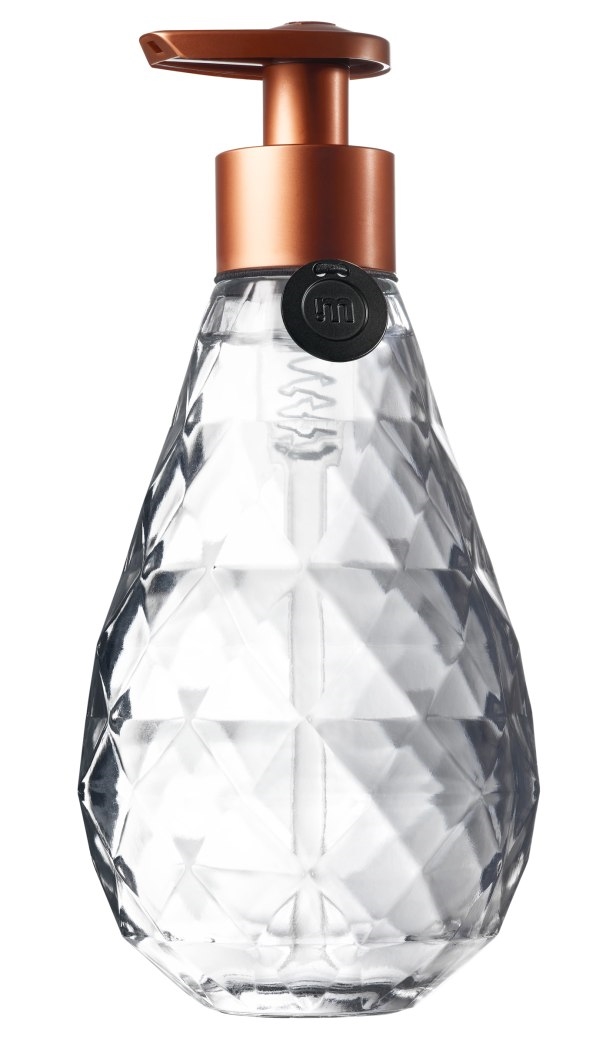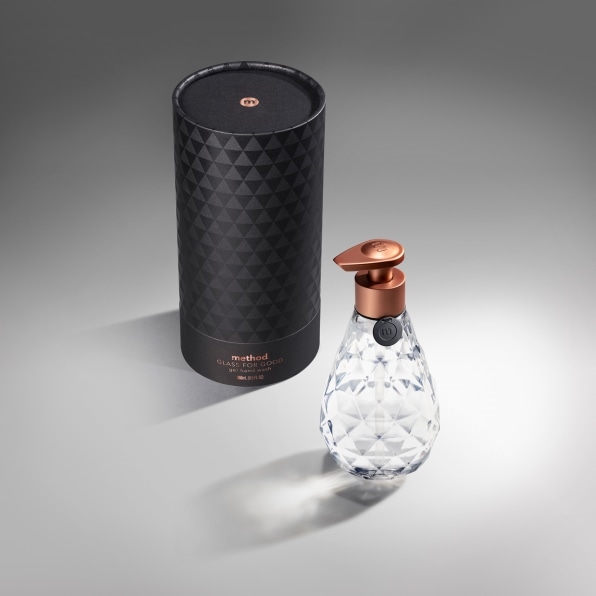The teardrop-shaped soap bottle that helped take Method from an experiment in a San Francisco apartment to shelves at Target just got a redesign: The company is now making a version in glass, in an attempt to nudge consumers away from creating more plastic trash.
“With this bottle, what we were hoping to do was bring some of our commitments to sustainability and design together and kind of use it as a test–and see how the consumer responds,” says Saskia Van Gendt, who leads the company’s sustainability team.

It’s a small test. The bottle, for now, is only available at SFMOMA’s museum store, so it won’t lead to any immediate widespread changes in how people buy soap. But it points toward the company’s larger interest in helping customers shift to buying refills instead of new packages.
Already, refills are a growing part of the company’s business. While Method wouldn’t share figures, it says that refills are projected to grow “strong double digits” this year. Thin refill packages use less plastic, and have an 82% lower carbon footprint. “It’s a huge unlock around sustainability if you can get a consumer to reuse the bottle that they’ve already purchased,” she says. “So we’ve tried to figure out all of the different ways to influence that.”
At the moment, she says, most U.S. retailers aren’t interested in having large refill stations in stores and letting customers bring in their own bottles–retailers can make more money by allocating shelf spaces to small packages. So Method is selling its individual pouches that can refill a bottle around three times, and still using a small amount of plastic. (For online sales, too, it’s necessary to have some form of packaging.) But Ecover, a European cleaning product company that bought Method in 2012, and was later itself acquired by SC Johnson, does have a growing number of in-store refill stations for its brand in Europe. There’s a stronger push there to solve the problem of plastic pollution.
“You have retailers saying how can we have this better offering for consumers to allow them to lower their plastic footprint, increase the refillability and reusability of the bottles, so you see retailers supporting it, but then there’s also a huge consumer demand,” Van Gendt says. “That’s created this whole new opportunity for us in Europe that is beginning to be supported by the retailer.” Other companies have shifted to refills elsewhere; Kao, the Japanese company that makes brands like Biore and Jergens, says that 80% of its sales in Japan now come from refills.

The same thing could happen in the U.S. as consumers become increasingly aware of the fact that plastic is trashing the ocean and entering the food chain. “You just kind of need that consumer pressure and demand to get the retailer excited to allow [a refill system],” Van Gendt says.
The company’s current bottles are made from 100% post-consumer recycled plastic. “You need to be purchasing recycled content in your packaging to drive the economics of recycling to exist in the first place,” she says. “If you don’t have demand, then you’re really not closing the loop.” Another limited edition is made partly from ocean plastic. The standard bottles are PET, the same material as water bottles, making them widely recyclable. Still, most American consumers don’t actually recycle plastic, and plastic packaging makes up about a third of the carbon footprint of Method’s products. Switching from plastic to single-use glass containers wouldn’t make sense, since glass is heavy and would take more fuel to ship. But shifting to a refillable system linked to reusable glass containers would help.
“Now, where we are today with the awareness around plastic, we’re continuing to look at what are those new solutions that might not be the obvious solution today,” says Van Gendt. “And I’m very hopeful that durables are part of that.”
(76)